Slurry storage requirements on farms are currently under the microscope. Officials from the Department of Agriculture have referenced on numerous occasions that changing weather patterns and extremes in weather, along with an increase in the area of land farmed intensively, are underpinning a reassessment of current regulations.
The Climate Change Adaptation Plan consultation document recently released by the Department of Agriculture highlighted that the rainfall volume over winter months is predicted to increase by 14%. The document warned “slurry storage will need to be reassessed for capacity during extreme weather events”.
There are almost 7,000 farmers availing of the nitrates derogation
It is also feared that such assessments could alter the permitted time periods for spreading slurry and the way in which it is applied.
The latter aspect is already in motion. There are almost 7,000 farmers availing of the nitrates derogation, which allows farmers to exceed the standard stocking rate cut-off of 170kg organic nitrogen (N) per hectare and farm up to 250kg organic N/ha.
These farmers are now only permitted to apply slurry by means of low-emission spreading technology. The Department states that this rule will also be extended to in the region of 4,500 farmers who are operating at a stocking rate in excess of 170kg organic N/ha, but are staying within the 170kg/ha limit by means of exporting slurry.
Major changes
At a recent webinar organised by Teagasc, senior inspector in the Department’s nitrates division Jack Nolan warned that there are major changes coming down the tracks on organic manure storage and stocking rate limits.
“The idea that there’ll have to be more storage on farms will have to be explored because we’ve had about three times in the last six years or seven years for calls for an extended closed period or to be allowed spread in the closed period.”
Blanket regulations have brought us so far, but in the future we’ll have to have targeted measures
Nolan added the problem lies with a lack of slurry storage on farms and defended any criticism that the prohibited period for applying organic fertilisers was too restrictive.
It is likely that if more restrictive measures are introduced, they will be targeted to more intensive units which are viewed as representing a higher risk.
“Blanket regulations have brought us so far, but in the future we’ll have to have targeted measures.”
The advice for farmers was to look ahead and to question how they could handle changes such as a dairy cow’s nitrogen output being increased from 85kg N/cow to 89kg N/cow, reduced fertiliser usage and higher storage requirements.
Slurry storage
The volume of organic nitrogen produced by varying classes of animals is detailed in Table 1. The length of time storage has to be provided for varies by region and ranges from 16 weeks in Zone A counties to 18 weeks in Zone B counties and 20 or 22 weeks in Zone C counties.
The counties within each zone are detailed in Figure 1, which also details the weekly rainfall volume. This will be discussed at a later stage in the article for taking account of rainfall falling on soiled areas or unroofed tanks.

Where lands fall within two zones, then you must abide by the higher storage requirement if 20% or more of the area falls within the zone with higher requirement.
Slurry storage requirements are likely to be a greater concern for dairy farmers given the rate that expansion has taken place at in recent years. As detailed in Table 1, a dairy cow is currently listed as producing 0.33m3/week of organic manure. Over a 16-week period, this equates to 5.28m3, while for an 18-week period this increases to 5.94m3.
Table 2 details the weekly requirement where animals are bedded on straw. It is generally accepted that there may be some level of seepage, but calculations can also be based on sufficient straw being used to absorb all urine. In this case, the volume of FYM produced per week will increase to eliminate the need to collect any seepage. The relevant figures for such a scenario can be found in the nitrates directive.
Available storage
The available storage on the farm can be calculated easily using tables three to six. Freeboard is an allowance taken to allow for a period of unsuitable weather preventing slurry spreading at the end of a prohibited application period and therefore cannot be included as available storage. It is taken as 200mm in covered tanks and 300mm in unroofed tanks.
As mentioned earlier, account also needs to be taken of the volume of rainfall falling on uncovered tanks or feeding areas, etc, and mixing with slurry. This figure is significantly higher in western and coastal regions and is the main factor why there are fewer overwintering options such as topless cubicles, out-wintering pads or lagoons for storing slurry.
Some farmers who are not in such a position put the slurry storage in place without grant aid and then apply for grant aid for the relevant structures
Many farmers with large circular tanks have significantly increased their slurry storage capacity in recent years by roofing these tanks and diverting rainfall to a clean water outlet.
It is important to note that to avail of grant aid for slurry storage facilities under the Targeted Agricultural Modernisation Scheme (TAMS II), sufficient storage already needs to be present on the farm. Some farmers who are not in such a position put the slurry storage in place without grant aid and then apply for grant aid for the relevant structures.
It is important to highlight that where a structure is being submitted for grant aid over an existing tank, then the tank must have been constructed in compliance with the Department’s buildings specifications and signed off on by a structural engineer.
Soiled water
Soiled water has become a greater concern in recent years, with herds expanding and larger unroofed collection yards or topless cubicles and unroofed tanks being constructed to overwinter higher numbers.
Rules governing how soiled water is handled are governed by Statutory Instruments SI No. 605 of 2017 and SI No. 65 of 2018 pertaining to Good Agricultural Practice for the Protection of Water Regulations 2018.
Soiled water is defined as water that is contaminated by contact with any of the following:
Livestock faeces or urine or silage effluent.Chemical fertilisers.Washings such as vegetable washings, milking parlour washings or washings from mushroom houses.Water used in washing farm equipment. It is policed by a biological oxygen demand (BOD) value and a dry matter content. Wash-down water which becomes lightly contaminated with livestock faeces or urine in a milking parlour for example shall be considered soiled water provided it does not exceed a BOD of 2,500mg per litre or a dry matter content exceeding 1% (10g/L). Where soiled water does not meet this criteria, then it is classified as slurry and sufficient storage must be provided adhering to requirements for the relevant zone.
Soiled water can be spread year-round, provided weather and the condition of land is suitable
Soiled water must have its own dedicated storage facilities that prevent runoff or seepage, directly or indirectly, into groundwater and surface water. The regulations are clear that soiled water which is stored with slurry is deemed to be slurry.
Soiled water can be spread year-round, provided weather and the condition of land is suitable and spreading takes place according to regulation rules. With regards to volumes permitted, the regulations state that the maximum volume permitted per hectare over a six-week period is 50,000l, while an application rate of 5mm per hour applied by irrigation must not be exceeded.
As per nitrates requirements, farmers must have at least 10 days storage requirements for soiled water at any stage of the year
The handbook highlights that there are extra restrictions in areas that are identified, on maps produced by the Geological Survey of Ireland, as extreme vulnerability areas on karst limestone aquifers. If applying in these areas, the maximum application rate per hectare in a six-week period is 25,000l, while the application rate by irrigation cannot exceed 3mm/hour.
As per nitrates requirements, farmers must have at least 10 days storage requirements for soiled water at any stage of the year. Where storage facilities have been constructed after 1 January 2015, then this requirement increases to 15 days storage at any stage of the year.
Reduced storage capacity
If livestock are out-wintered at any time during the prohibited period, then you may require reduced storage capacity. The rule applies if sheep, deer or goats are out-wintered at a grassland stocking rate of not more than 130kg organic nitrogen/ha (equivalent of 10 ewes/ha). The rule also applies if you have other livestock excluding dairy cows out-wintered at a grassland stocking rate not exceeding 85kg/ha. If sheep, deer or goats are out-wintered with cattle, then the lower 85kg/ha stocking rate applies.
Out-wintered stock must have access to the required land and there must be no severe poaching
There are a number of other criteria that must be met. The total livestock manure produced on the holding must not exceed 140kg N/ha over the calendar year. Out-wintered stock must have access to the required land and there must be no severe poaching. The reduction in storage capacity is equal to the actual number of stock out-wintered. The rule cannot be used to have reduced storage capacity for dairy cows.
Slurry storage requirements on farms are currently under the microscope. Officials from the Department of Agriculture have referenced on numerous occasions that changing weather patterns and extremes in weather, along with an increase in the area of land farmed intensively, are underpinning a reassessment of current regulations.
The Climate Change Adaptation Plan consultation document recently released by the Department of Agriculture highlighted that the rainfall volume over winter months is predicted to increase by 14%. The document warned “slurry storage will need to be reassessed for capacity during extreme weather events”.
There are almost 7,000 farmers availing of the nitrates derogation
It is also feared that such assessments could alter the permitted time periods for spreading slurry and the way in which it is applied.
The latter aspect is already in motion. There are almost 7,000 farmers availing of the nitrates derogation, which allows farmers to exceed the standard stocking rate cut-off of 170kg organic nitrogen (N) per hectare and farm up to 250kg organic N/ha.
These farmers are now only permitted to apply slurry by means of low-emission spreading technology. The Department states that this rule will also be extended to in the region of 4,500 farmers who are operating at a stocking rate in excess of 170kg organic N/ha, but are staying within the 170kg/ha limit by means of exporting slurry.
Major changes
At a recent webinar organised by Teagasc, senior inspector in the Department’s nitrates division Jack Nolan warned that there are major changes coming down the tracks on organic manure storage and stocking rate limits.
“The idea that there’ll have to be more storage on farms will have to be explored because we’ve had about three times in the last six years or seven years for calls for an extended closed period or to be allowed spread in the closed period.”
Blanket regulations have brought us so far, but in the future we’ll have to have targeted measures
Nolan added the problem lies with a lack of slurry storage on farms and defended any criticism that the prohibited period for applying organic fertilisers was too restrictive.
It is likely that if more restrictive measures are introduced, they will be targeted to more intensive units which are viewed as representing a higher risk.
“Blanket regulations have brought us so far, but in the future we’ll have to have targeted measures.”
The advice for farmers was to look ahead and to question how they could handle changes such as a dairy cow’s nitrogen output being increased from 85kg N/cow to 89kg N/cow, reduced fertiliser usage and higher storage requirements.
Slurry storage
The volume of organic nitrogen produced by varying classes of animals is detailed in Table 1. The length of time storage has to be provided for varies by region and ranges from 16 weeks in Zone A counties to 18 weeks in Zone B counties and 20 or 22 weeks in Zone C counties.
The counties within each zone are detailed in Figure 1, which also details the weekly rainfall volume. This will be discussed at a later stage in the article for taking account of rainfall falling on soiled areas or unroofed tanks.

Where lands fall within two zones, then you must abide by the higher storage requirement if 20% or more of the area falls within the zone with higher requirement.
Slurry storage requirements are likely to be a greater concern for dairy farmers given the rate that expansion has taken place at in recent years. As detailed in Table 1, a dairy cow is currently listed as producing 0.33m3/week of organic manure. Over a 16-week period, this equates to 5.28m3, while for an 18-week period this increases to 5.94m3.
Table 2 details the weekly requirement where animals are bedded on straw. It is generally accepted that there may be some level of seepage, but calculations can also be based on sufficient straw being used to absorb all urine. In this case, the volume of FYM produced per week will increase to eliminate the need to collect any seepage. The relevant figures for such a scenario can be found in the nitrates directive.
Available storage
The available storage on the farm can be calculated easily using tables three to six. Freeboard is an allowance taken to allow for a period of unsuitable weather preventing slurry spreading at the end of a prohibited application period and therefore cannot be included as available storage. It is taken as 200mm in covered tanks and 300mm in unroofed tanks.
As mentioned earlier, account also needs to be taken of the volume of rainfall falling on uncovered tanks or feeding areas, etc, and mixing with slurry. This figure is significantly higher in western and coastal regions and is the main factor why there are fewer overwintering options such as topless cubicles, out-wintering pads or lagoons for storing slurry.
Some farmers who are not in such a position put the slurry storage in place without grant aid and then apply for grant aid for the relevant structures
Many farmers with large circular tanks have significantly increased their slurry storage capacity in recent years by roofing these tanks and diverting rainfall to a clean water outlet.
It is important to note that to avail of grant aid for slurry storage facilities under the Targeted Agricultural Modernisation Scheme (TAMS II), sufficient storage already needs to be present on the farm. Some farmers who are not in such a position put the slurry storage in place without grant aid and then apply for grant aid for the relevant structures.
It is important to highlight that where a structure is being submitted for grant aid over an existing tank, then the tank must have been constructed in compliance with the Department’s buildings specifications and signed off on by a structural engineer.
Soiled water
Soiled water has become a greater concern in recent years, with herds expanding and larger unroofed collection yards or topless cubicles and unroofed tanks being constructed to overwinter higher numbers.
Rules governing how soiled water is handled are governed by Statutory Instruments SI No. 605 of 2017 and SI No. 65 of 2018 pertaining to Good Agricultural Practice for the Protection of Water Regulations 2018.
Soiled water is defined as water that is contaminated by contact with any of the following:
Livestock faeces or urine or silage effluent.Chemical fertilisers.Washings such as vegetable washings, milking parlour washings or washings from mushroom houses.Water used in washing farm equipment. It is policed by a biological oxygen demand (BOD) value and a dry matter content. Wash-down water which becomes lightly contaminated with livestock faeces or urine in a milking parlour for example shall be considered soiled water provided it does not exceed a BOD of 2,500mg per litre or a dry matter content exceeding 1% (10g/L). Where soiled water does not meet this criteria, then it is classified as slurry and sufficient storage must be provided adhering to requirements for the relevant zone.
Soiled water can be spread year-round, provided weather and the condition of land is suitable
Soiled water must have its own dedicated storage facilities that prevent runoff or seepage, directly or indirectly, into groundwater and surface water. The regulations are clear that soiled water which is stored with slurry is deemed to be slurry.
Soiled water can be spread year-round, provided weather and the condition of land is suitable and spreading takes place according to regulation rules. With regards to volumes permitted, the regulations state that the maximum volume permitted per hectare over a six-week period is 50,000l, while an application rate of 5mm per hour applied by irrigation must not be exceeded.
As per nitrates requirements, farmers must have at least 10 days storage requirements for soiled water at any stage of the year
The handbook highlights that there are extra restrictions in areas that are identified, on maps produced by the Geological Survey of Ireland, as extreme vulnerability areas on karst limestone aquifers. If applying in these areas, the maximum application rate per hectare in a six-week period is 25,000l, while the application rate by irrigation cannot exceed 3mm/hour.
As per nitrates requirements, farmers must have at least 10 days storage requirements for soiled water at any stage of the year. Where storage facilities have been constructed after 1 January 2015, then this requirement increases to 15 days storage at any stage of the year.
Reduced storage capacity
If livestock are out-wintered at any time during the prohibited period, then you may require reduced storage capacity. The rule applies if sheep, deer or goats are out-wintered at a grassland stocking rate of not more than 130kg organic nitrogen/ha (equivalent of 10 ewes/ha). The rule also applies if you have other livestock excluding dairy cows out-wintered at a grassland stocking rate not exceeding 85kg/ha. If sheep, deer or goats are out-wintered with cattle, then the lower 85kg/ha stocking rate applies.
Out-wintered stock must have access to the required land and there must be no severe poaching
There are a number of other criteria that must be met. The total livestock manure produced on the holding must not exceed 140kg N/ha over the calendar year. Out-wintered stock must have access to the required land and there must be no severe poaching. The reduction in storage capacity is equal to the actual number of stock out-wintered. The rule cannot be used to have reduced storage capacity for dairy cows.





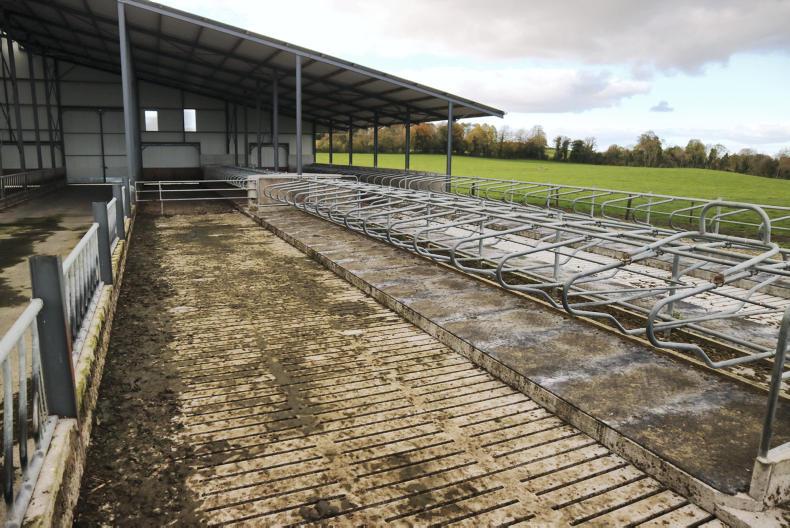
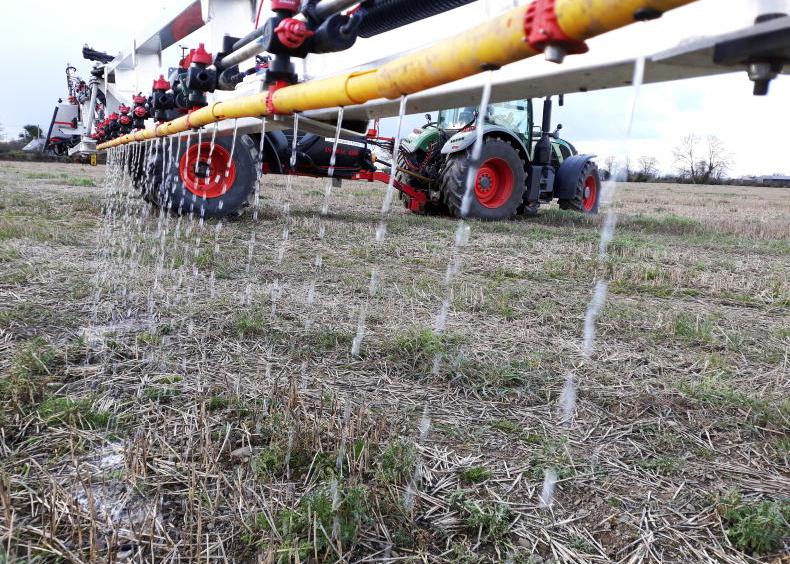
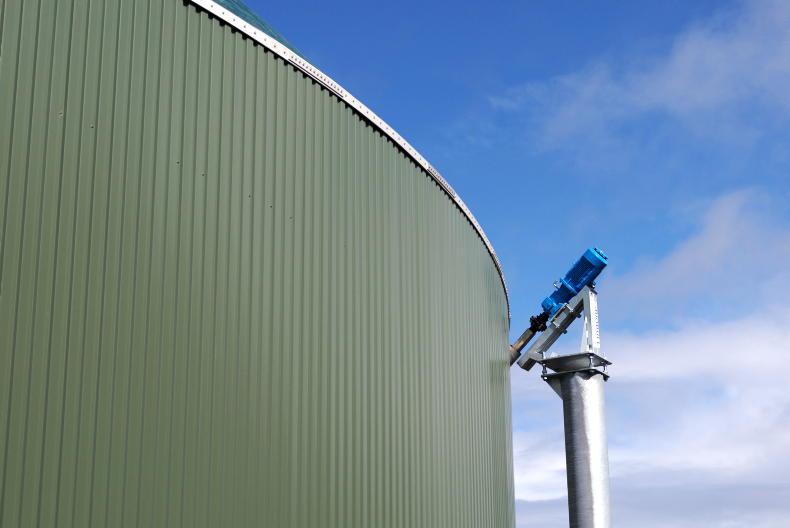
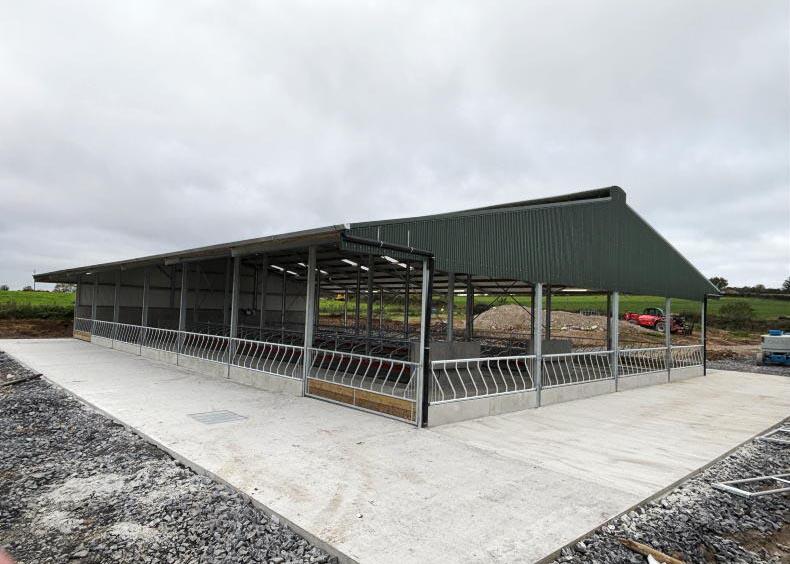
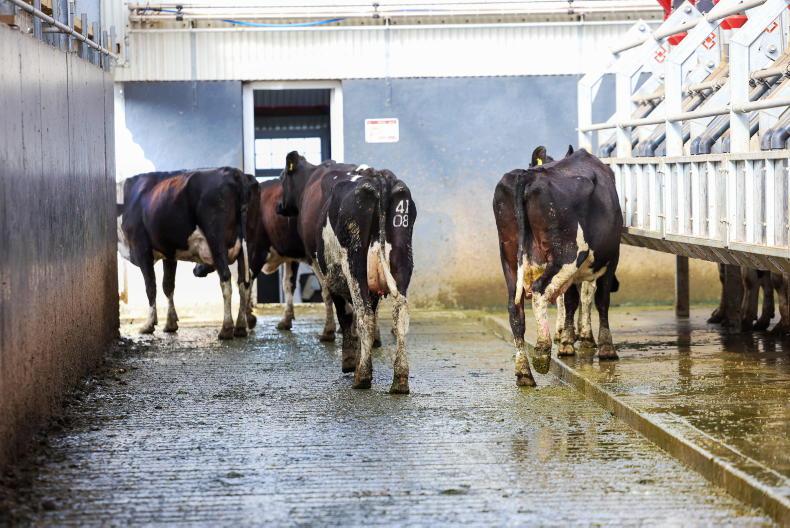
SHARING OPTIONS